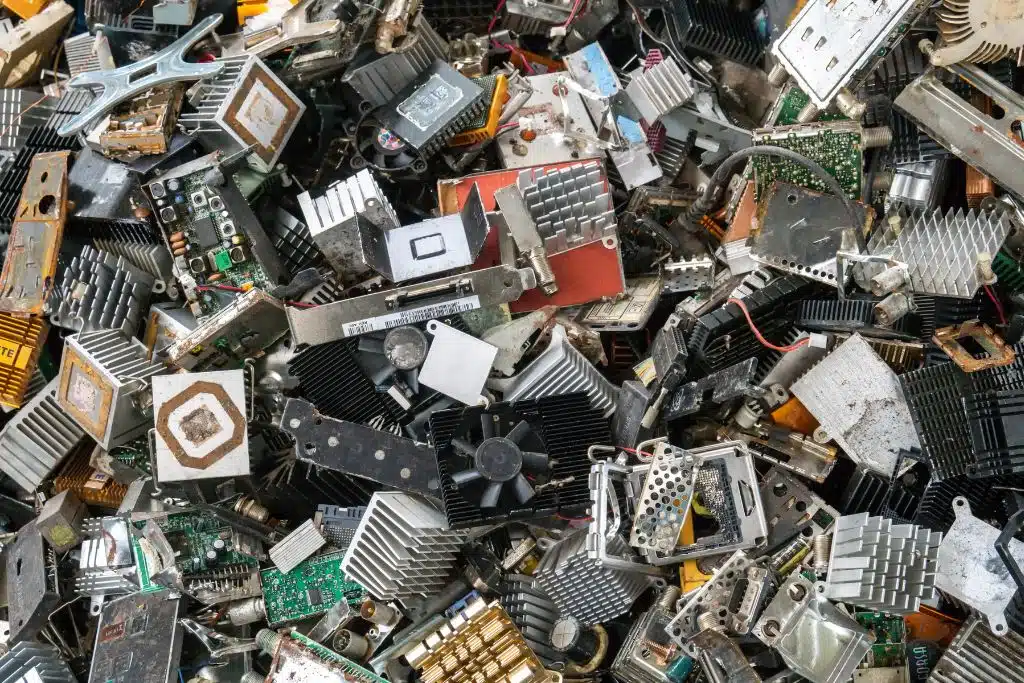In the modern world, the act of throwing something “away” has become a reflex. We discard old phones, broken appliances, and single-use plastics without a second thought, trusting that they will disappear into some unseen void. But the truth is far more unsettling: waste never truly goes “away.” It simply moves from our hands to landfills, incinerators, or the environment, where it lingers for decades, centuries, or even millennia. Nowhere is this more evident than in the growing crisis of electronic waste, or e-waste, particularly devices with non-removable batteries. These products, designed for convenience, are creating a global environmental disaster that recycling alone cannot solve.
The Myth of Recycling
Recycling has long been touted as the solution to our waste problem. Governments, corporations, and environmental organizations have encouraged consumers to recycle as a way to reduce their environmental footprint. But the reality is far more complicated. Recycling rates for many materials remain dismally low. For example, only about 9% of all plastic ever produced has been recycled, according to a 2017 study published in Science Advances. The rest ends up in landfills, incinerators, or the natural environment, where it contributes to pollution and climate change.
The situation is even worse for e-waste. The Global E-waste Monitor 2020 reported that a staggering 53.6 million metric tons of e-waste was generated worldwide in 2019, but only 17.4% of it was formally collected and recycled. The rest was either dumped in landfills, burned, or illegally exported to developing countries, where it poses serious health and environmental risks. This is not just a failure of recycling systems; it is a failure of design, policy, and consumer culture.
The Rise of E-Waste and the Battery Problem
Electronic devices have become an integral part of modern life. From smartphones to laptops to electric vehicles, we rely on these technologies for communication, work, and entertainment. But the rapid pace of technological advancement has created a throwaway culture, where devices are replaced every few years, often because they are designed to be difficult or impossible to repair. One of the most problematic design trends in recent years is the use of non-removable batteries.
Non-removable batteries, also known as sealed batteries, are built into devices in a way that makes them inaccessible to users. While this design choice allows for thinner, sleeker devices, it also makes repairs more difficult and recycling more complicated. When the battery in a smartphone or laptop fails, the entire device often becomes unusable, even if the other components are still functional. This not only contributes to e-waste but also creates significant challenges for recycling facilities.
The Challenges of Recycling E-Waste with Non-Removable Batteries
Recycling e-waste is a complex and labor-intensive process. Devices must be disassembled, and their components sorted into different material streams. Batteries, in particular, require special handling because they contain hazardous materials like lithium, cobalt, and nickel. If not properly managed, these materials can leak into the environment, causing soil and water contamination, or even ignite fires at recycling facilities.
Non-removable batteries make this process even more difficult. In many cases, the batteries are glued or welded into place, making them nearly impossible to remove without damaging the device. This increases the time and cost of recycling, and in some cases, it renders the device unrecyclable altogether. According to a report by the European Environmental Bureau, only 5% of lithium-ion batteries in e-waste are currently recycled, largely due to these design challenges.
The consequences of this failure are far-reaching. Cobalt, a key component of lithium-ion batteries, is often mined under exploitative and environmentally destructive conditions in countries like the Democratic Republic of Congo. By failing to recycle batteries, we are not only wasting valuable resources but also perpetuating a cycle of environmental degradation and human rights abuses.
Real-World Examples of the E-Waste Crisis
The impact of e-waste is felt most acutely in developing countries, where much of the world’s e-waste is illegally exported. In places like Agbogbloshie, Ghana, and Guiyu, China, informal recycling operations have sprung up to process the flood of discarded electronics. Workers, often including children, dismantle devices by hand, exposing themselves to toxic chemicals and heavy metals. These operations are not only hazardous to human health but also devastating to the local environment.
For example, in Agbogbloshie, a sprawling e-waste dump often referred to as “Sodom and Gomorrah,” the soil and water have been contaminated with lead, mercury, and other toxins. A study by the Blacksmith Institute found that the levels of lead in the soil were more than 100 times higher than the World Health Organization’s safety limits. The health effects on the local population, including respiratory problems, skin conditions, and developmental delays in children, are profound and long-lasting.
In Guiyu, China, once known as the “e-waste capital of the world,” the situation is similarly dire. A study published in Environmental Science & Technology found that the levels of heavy metals in the local water supply were significantly higher than national safety standards. The study also found that residents had elevated levels of lead and cadmium in their blood, which are linked to kidney damage, neurological disorders, and cancer.
The Role of Planned Obsolescence
At the heart of the e-waste crisis is the practice of planned obsolescence, where products are designed to have a limited lifespan. This is particularly evident in the tech industry, where companies release new models of smartphones, laptops, and other devices every year, often with minor upgrades. Consumers are encouraged to upgrade frequently, even if their existing devices are still functional.
Non-removable batteries are a key enabler of planned obsolescence. By making it difficult or impossible to replace a failing battery, manufacturers ensure that consumers will eventually need to buy a new device. This not only drives profits for tech companies but also exacerbates the e-waste problem. According to a report by the European Parliament, extending the lifespan of smartphones by just one year could save the EU as much as 2.1 million metric tons of CO2 emissions annually—equivalent to taking over a million cars off the road.
The Global Flow of Waste: Where Does It All Go?
The global waste trade is a multi-billion-dollar industry, with developed countries exporting their waste to developing nations under the guise of recycling. According to a 2019 report by the United Nations Comtrade database, the U.S. exported 1.1 million metric tons of plastic waste to 96 countries in 2018, with the majority going to countries in Southeast Asia, such as Malaysia, Thailand, and Vietnam. Similarly, the European Union exported 1.5 million metric tons of plastic waste in the same year, with Turkey being the largest recipient.
However, much of this waste is not recycled. Instead, it ends up in poorly managed landfills, open dumps, or incinerators, where it releases toxic chemicals into the air, water, and soil. For example, in Malaysia, illegal plastic recycling facilities have been found burning plastic waste in open pits, releasing harmful dioxins and furans into the air. These chemicals are known to cause cancer, reproductive disorders, and immune system damage.
The Impact on Receiving Countries
The environmental and social impacts of the global waste trade are devastating for receiving countries. In addition to the health risks posed by toxic chemicals, the influx of waste overwhelms local waste management systems, leading to environmental degradation and social inequality.
For example, in the Philippines, the importation of waste from Canada in 2013-2014 led to a diplomatic crisis known as the “Canada garbage scandal.” Over 100 shipping containers of mixed waste, including household trash and used diapers, were illegally dumped in the Philippines under the label of recyclable plastics. The waste sat in ports for years, leaking toxic liquids and emitting foul odors, before being shipped back to Canada in 2019.
In Indonesia, the importation of plastic waste has led to the contamination of local water supplies and the destruction of marine ecosystems. A 2018 study by the Indonesian Institute of Sciences found that 90% of fish sampled in Jakarta Bay had ingested microplastics, which can accumulate in the food chain and pose risks to human health.
The Need for Systemic Change
Addressing the e-waste crisis requires more than just better recycling systems. It requires a fundamental shift in how we design, produce, and consume electronic devices. This includes designing for durability and repairability, holding manufacturers accountable, promoting a circular economy, and investing in recycling infrastructure.
Designing for durability and repairability means creating products that last longer and are easier to repair. This includes using modular designs, standardized components, and removable batteries. The Right to Repair movement, which advocates for laws requiring manufacturers to provide repair manuals and spare parts, is a crucial step in this direction.
Holding manufacturers accountable involves implementing extended producer responsibility (EPR) laws, which require manufacturers to take responsibility for the end-of-life disposal of their products. The EU’s Waste Electrical and Electronic Equipment (WEEE) Directive is an example of this approach, though its effectiveness has been limited by poor enforcement and loopholes.
Promoting a circular economy aims to keep materials in use for as long as possible, through reuse, repair, and recycling. This requires not only changes in design and production but also shifts in consumer behavior and business models. For example, companies like Fairphone are pioneering modular smartphones designed for easy repair and upgradeability.
Investing in recycling infrastructure means developing advanced recycling technologies that can safely and efficiently process e-waste, including non-removable batteries. This includes developing new methods for extracting valuable materials from batteries, such as hydrometallurgical processes.






